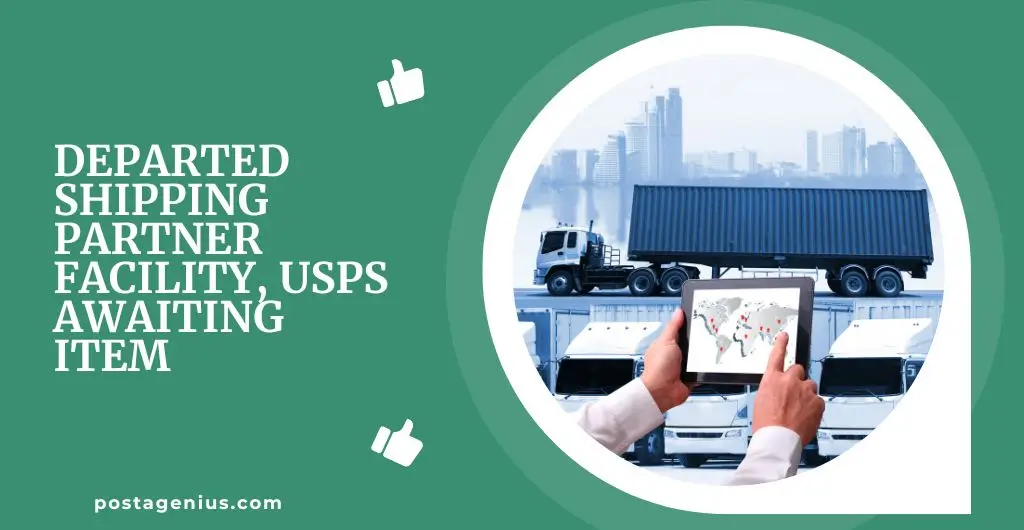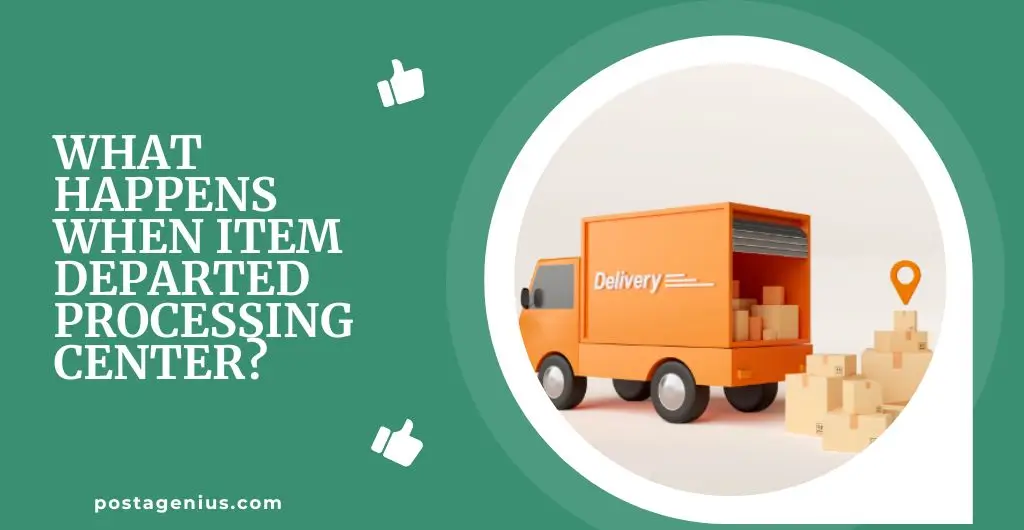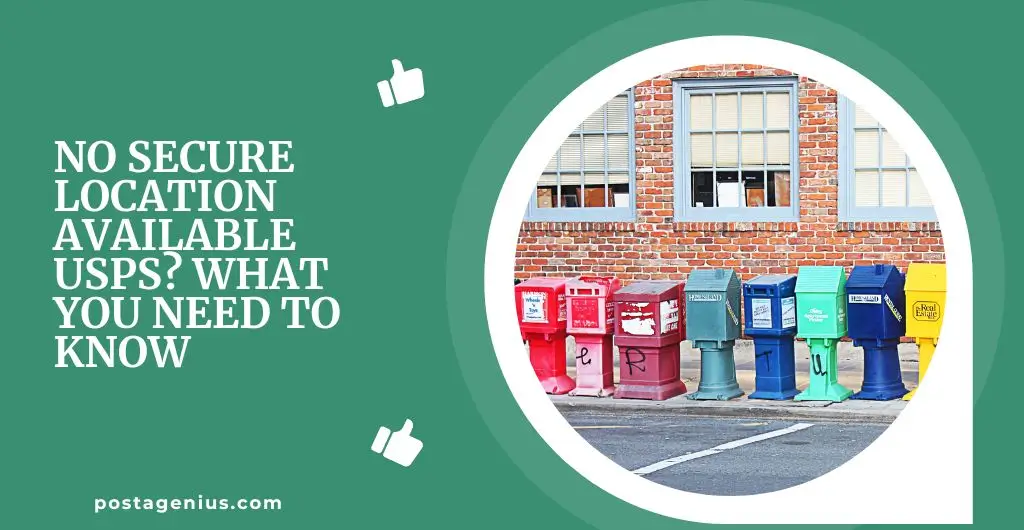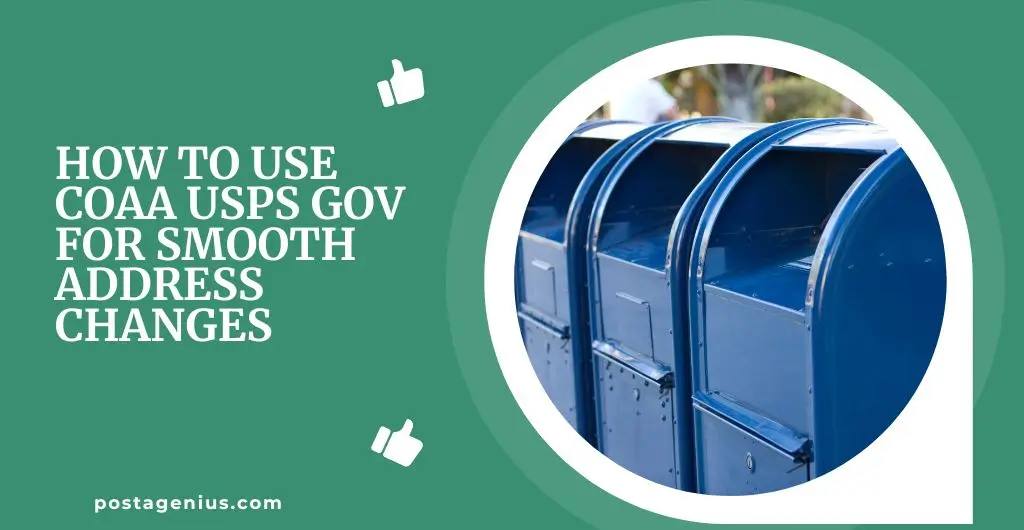Fake USPS Tracking Number Generators: What You Need to Know
In today’s fast-paced digital economy, tracking numbers are essential for monitoring the status of online orders. These unique identifiers provide peace of mind, allowing customers to follow their packages every step of the way.
However, the rise of fake tracking number generators, particularly for USPS, has created new challenges for both consumers and businesses.
This article explores the world of fake USPS tracking number generators, why they are used, the potential risks, and how to spot the difference between fake and real tracking numbers.
Contents
- 1 Why Are Fake USPS Tracking Number Generators Used?
- 1.1 The Procedure: How Do Fake USPS Tracking Number Generators Work?
- 1.2 How to Know if a USPS Tracking Number is Fake
- 1.2.1 1. The Tracking Number Doesn’t Appear in the USPS Portal
- 1.2.2 2. The Tracking Number Link Looks Phishy
- 1.2.3 3. The Tracking Status Already Says Delivered
- 1.2.4 4. You’re Asked to Provide Additional Information
- 1.2.5 5. You’re Asked to Pay a Fee for Something Extra
- 1.2.6 Signs of a Fake USPS Tracking Number
- 1.3 What to Avoid When Using Fake Tracking Number Generators
- 1.4 Benefits of Understanding Fake Tracking Numbers
- 1.5 Tips to Spot the Difference Between Fake and Real USPS Tracking Numbers
- 1.6 Common USPS Tracking Number Formats
- 1.7 How To Avoid Falling for Fake USPS Tracking Number Scams
- 1.8 What Are the Consequences of Using and Generating Fake USPS Tracking Numbers?
- 1.9 Ethical Consequences
- 1.10 Latest Statistics on USPS and Online Scams
- 1.11 Key Takeaways
- 1.12 Conclusion
- 1.13 FAQs
Why Are Fake USPS Tracking Number Generators Used?
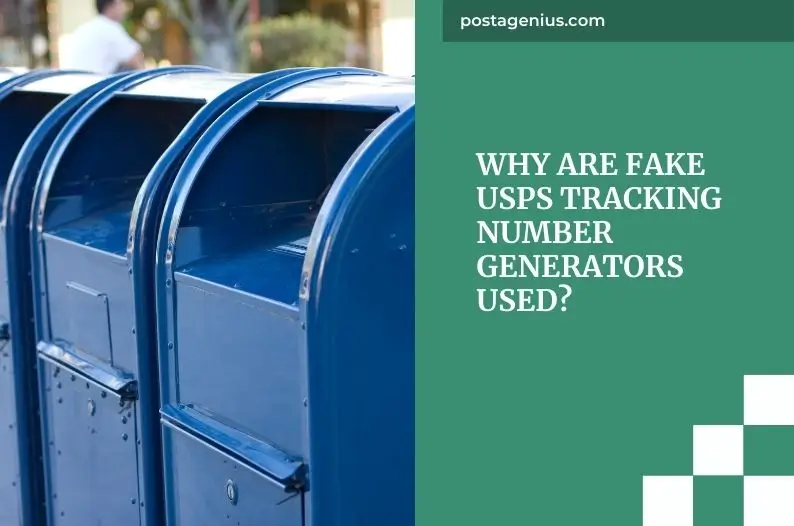
Fake tracking number generators serve various purposes, some of which may seem harmless, while others are more malicious.
Check this out: USPS Call-In Sick Number
Understanding why these generators are used is crucial for navigating the potential pitfalls.
| Purpose | Description |
|---|---|
| Privacy Protection | Protects personal information during online transactions by using fake tracking numbers. |
| System Testing | Used by developers and system testers to evaluate tracking systems’ performance and functionality. |
| Educational Use | Utilized by students and educators for logistics and programming projects to understand tracking systems. |
| Harmless Fun | Sometimes used for pranks or creative projects, though this can lead to unintended consequences. |
The Procedure: How Do Fake USPS Tracking Number Generators Work?
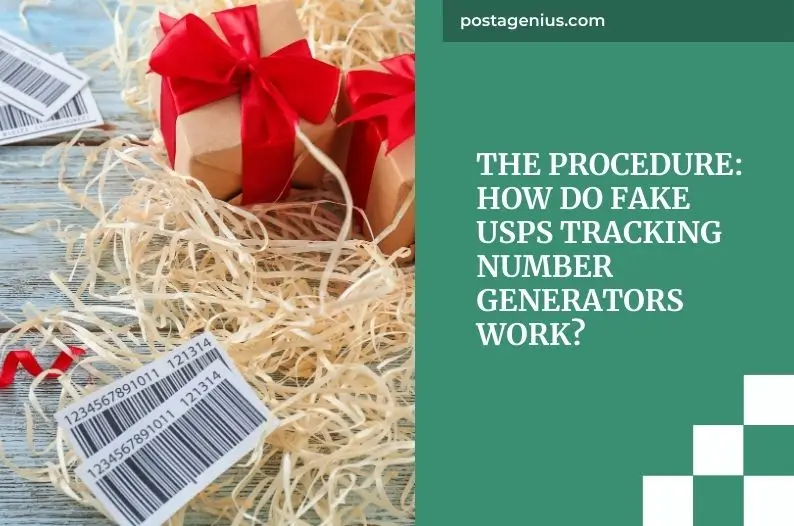
Fake USPS tracking number generators are designed to mimic the format and structure of real tracking numbers. Here’s a breakdown of how they typically work:
- Input Customization: Users can customize the tracking number by adding a prefix, choosing the length of random digits, and including a suffix.
- Alphanumeric Generation: The generator produces a series of random alphanumeric characters to mimic the complexity of real tracking numbers.
- Checksum Inclusion: Some generators include a checksum feature to enhance the authenticity of the fake tracking number.
- Instant Generation: After customization, the generator instantly creates the fake tracking number.
For an example of such a tool, you can visit Fake Tracking Number Generator, which offers options for generating tracking numbers for various services, including USPS, FedEx, UPS, and more.
How to Know if a USPS Tracking Number is Fake
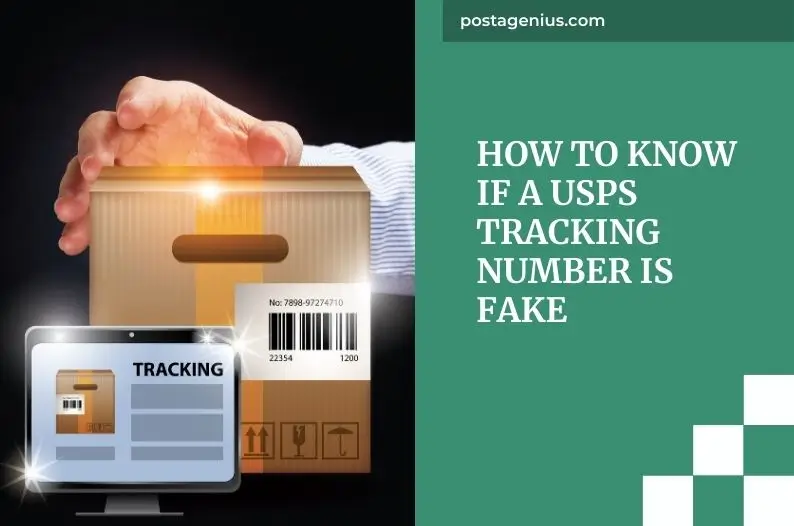
As someone who’s experienced receiving a fake USPS tracking number firsthand, I can share insights into how to spot a scam and avoid becoming a victim.
The signs can be subtle, but if you know what to look for, you can steer clear of these scams.
Read Also : How To Write A PO Box Address On Amazon
1. The Tracking Number Doesn’t Appear in the USPS Portal
- When you receive a tracking number, it should be verifiable in the USPS portal using the USPS tracking tool.
- This tool provides status updates on your order and shows sample numbers for different services, such as priority shipping or those requiring a signature.
- If the tracking number you received doesn’t show up or doesn’t match the examples provided, it’s likely a fake tracking number.
2. The Tracking Number Link Looks Phishy
- Scammers often send fraudulent links that appear legitimate but lead to malicious sites.
- Before clicking any link, preview the URL by hovering your mouse over it or use a URL checker like Google Transparency Report.
- If the link seems suspicious, avoid clicking it. Scammers may embed a phishing link to trick you into downloading malware or stealing your private information.
3. The Tracking Status Already Says Delivered
- A major red flag is when the tracking status shows “delivered” even though you haven’t received your package.
- In my personal experience, the scammer claimed the package had just been dropped off, but the status falsely indicated it was already delivered.
- Cybercriminals use this tactic to make a fake tracking number seem legitimate.
4. You’re Asked to Provide Additional Information
- If you’re asked to provide more details like your address or credit card information after receiving a tracking number, it’s a strong indicator of a scam.
- Scammers may contact you via text message or email, posing as USPS, to conduct a phishing attack.
- This attack is often done through SMS messages (known as smishing), as scammers prefer pretending to be USPS over text rather than vishing (over the phone).
5. You’re Asked to Pay a Fee for Something Extra
- The real USPS will never ask you to pay additional fees after confirming your order.
- Scammers might claim there was an issue with your delivery and demand a redelivery fee.
- This is just another method for the scammer to extract more money from you once you’ve fallen for their scam.
Signs of a Fake USPS Tracking Number
| Signs of a Fake USPS Tracking Number | Explanation |
|---|---|
| Tracking number doesn’t appear in the USPS portal | The number is not recognized by the official USPS system. |
| Phishy tracking number link | The link may lead to malware or phishing sites. |
| Tracking status says delivered but you haven’t received the package | Indicates the number is likely fake. |
| Request for additional information | Scammer attempts to steal personal or financial information. |
| Request for extra fees | Scammers pretend to be USPS to get more money from you. |
What to Avoid When Using Fake Tracking Number Generators
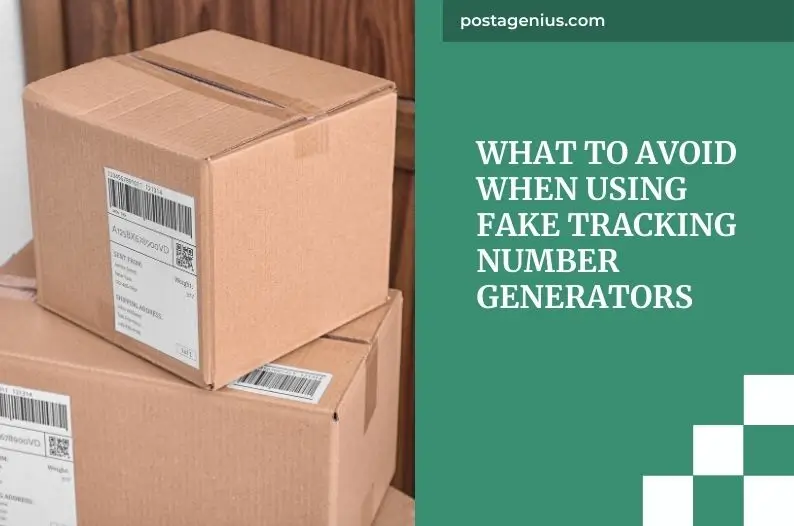
While fake tracking number generators can be useful in specific scenarios, they also pose risks. Here’s what to avoid:
- Using for Fraudulent Purposes: Generating fake tracking numbers for fraudulent activities is illegal and unethical, leading to severe consequences.
- Over-Reliance on Fake Numbers: Excessive use of fake numbers in business can erode customer trust.
- Sharing Fake Numbers with Customers: Avoid sharing fake tracking numbers as real ones; it can lead to confusion and credibility loss.
Further Exploration : What Does USLAXA Mean on USPS Tracking
Benefits of Understanding Fake Tracking Numbers
Understanding fake tracking numbers and how they are generated offers several benefits:
- Enhanced Security: Protect yourself and your business from fraud by understanding fake tracking numbers.
- Improved System Testing: Developers can use fake tracking numbers to identify weaknesses in tracking systems.
- Better Customer Communication: Knowing how to differentiate between real and fake tracking numbers helps assist concerned customers.
Tips to Spot the Difference Between Fake and Real USPS Tracking Numbers
Differentiating between fake and real USPS tracking numbers is crucial. Here are some tips:
- Format Consistency: Real USPS tracking numbers follow a specific format. Deviations may indicate a fake number.
- Tracking History: Real tracking numbers provide detailed package history. Fake numbers often lack comprehensive tracking information.
- Verification with USPS: Always verify tracking numbers directly with USPS to ensure their authenticity.
- Online Tracking Tools: Use official USPS online tracking tools to cross-check the tracking number.
Common USPS Tracking Number Formats
USPS tracking numbers typically follow specific formats depending on the type of service being used. These formats are essential for identifying and tracking packages as they move through the USPS system.
Here’s a look at the common formats:
| Service | Tracking Number Format | Example |
|---|---|---|
| USPS Priority Mail | 9400 1000 0000 0000 0000 00 | 9400 1234 5678 9012 3456 78 |
| USPS Express Mail | 9270 1000 0000 0000 0000 00 | 9270 5678 9012 3456 7890 12 |
| Certified Mail | 9407 3000 0000 0000 0000 00 | 9407 5678 9012 3456 7890 12 |
| Global Express | EA 000 000 000 US | EA 123 456 789 US |
How To Avoid Falling for Fake USPS Tracking Number Scams
After dealing with fake tracking number scams myself, I’ve learned how crucial it is to take the necessary steps to protect yourself from becoming a victim.
Here’s how you can avoid falling for these scams and ensure your order is safe.
Only Order from Legitimate Online Stores

My first mistake was not ordering from legitimate online stores.
I was eager to buy an item that was rarely available, and in my haste, I made a risky decision to purchase from a suspicious online store.
This mistake not only put my private information at risk of being stolen but also led to a fake tracking number.
To avoid this, always ensure that the online store you’re purchasing from is legitimate. You can do this by evaluating the design of the website, examining its URL, and researching the company.
Once you’ve determined the store is a legitimate business, take an extra step and paste the URL into the Google Transparency Report to confirm that the site is safe.
By following these steps, you significantly reduce the risk of being scammed.
Must Read : Inbound Into Customs
Ignore Unsolicited Messages Claiming to Be From USPS

I’ve received unsolicited messages from phone numbers or emails claiming to be from USPS about issues with my order.
These messages are often part of a phishing scam. My best advice is to ignore these messages, report them as junk, and block the sender. If you’re not waiting for a package to be delivered, this is an immediate red flag.
Even if you’ve made a purchase, rely only on the tracking number that came with your receipt instead of trusting any suspicious message.
Scammers pretending to be USPS might claim there’s a sudden change in your delivery or ask for more personal information to complete your order—both are strong indicators of a scam.
Verify Your Tracking Number Immediately After Purchasing Online
| Steps to Avoid Fake USPS Tracking Number Scams | Action |
|---|---|
| Order from legitimate online stores | Verify the store’s legitimacy through design, URL, and research. |
| Ignore unsolicited messages | Report and block suspicious messages from unknown numbers or emails. |
| Verify tracking numbers immediately | Use the tracking number from your official receipt to track packages. |
Whenever you make a purchase from a reputable online store, it’s crucial to verify your tracking number immediately.
Save the online confirmation or receipt that includes the tracking number and use this number from the official order whenever you need to track your package.
This simple step can save you from falling victim to a fake tracking number scam.
These precautions have helped me and can help you avoid the pitfalls of fake tracking number scams. Stay vigilant, and always take steps to ensure your order is safe.
What Are the Consequences of Using and Generating Fake USPS Tracking Numbers?
Using or generating fake USPS tracking numbers can have serious legal, financial, and reputational consequences.
Whether you’re an individual unknowingly involved in such activities or someone deliberately engaging in these practices, the risks are significant.
Legal Consequences
| Legal Consequences | Description |
|---|---|
| Fraud Charges | Criminal offense for deceiving customers or businesses. |
| Fines and Penalties | Hefty fines imposed for creating or using fake tracking. |
| Imprisonment | Possible jail time for severe or large-scale fraud. |
- Fraud Charges: Generating or using fake tracking numbers can lead to fraud charges. The act of deceiving customers or businesses through fake tracking information is considered a criminal offense.
- Fines and Penalties: Those caught creating or using fake tracking numbers can face hefty fines. The penalties vary depending on the severity and impact of the fraud.
- Imprisonment: In extreme cases, especially if the fraud involves large sums of money or widespread deception, the individuals involved could face imprisonment.
Financial Consequences
| Financial Consequences | Description |
|---|---|
| Monetary Loss | Paying restitution to scam victims. |
| Loss of Business | Loss of customers and trust leading to financial decline. |
| Refunds and Compensation | Obligation to compensate customers affected by the fraud. |
- Monetary Loss: If you’re caught using or generating fake tracking numbers, you could be required to pay restitution to the victims of the scam.
- Loss of Business: For businesses, being associated with fake tracking numbers can lead to a loss of trust and customers, resulting in significant financial loss.
- Refunds and Compensation: Businesses may be forced to issue refunds and compensate customers for any losses incurred due to fake tracking numbers.
Reputational Consequences
| Reputational Consequences | Description |
|---|---|
| Damage to Reputation | Severe damage to personal or business reputation. |
| Loss of Trust | Decreased customer and partner confidence. |
| Negative Publicity | Potential for widespread negative media coverage. |
- Damage to Reputation: Whether you’re an individual or a business, being involved in the use or creation of fake tracking numbers can severely damage your reputation.
- Loss of Trust: Customers and partners will likely lose trust in a business if they discover that fake tracking numbers were used.
- Negative Publicity: News of such fraud can spread quickly, leading to negative publicity that could take years to overcome.
Operational Consequences
| Operational Consequences | Description |
|---|---|
| Increased Scrutiny | Greater attention from regulators and law enforcement. |
| Disruption of Services | Operational delays due to legal investigations and actions. |
| Loss of Partnerships | Potential loss of business relationships and supply chain issues. |
- Increased Scrutiny: Once involved in a fake tracking number scheme, your business might face increased scrutiny from regulatory bodies and law enforcement.
- Disruption of Services: Investigations and legal actions can disrupt your operations, leading to delays and losses.
- Loss of Partnerships: Partners and suppliers may sever ties with a business involved in fraudulent activities, impacting supply chains and business operations.
Ethical Consequences
| Ethical Consequences | Description |
|---|---|
| Moral Implications | Ethical concerns about harming innocent victims. |
| Long-term Impact | Negative effect on personal integrity and future opportunities. |
- Moral Implications: Engaging in fraud through fake tracking numbers raises significant ethical concerns, including the harm caused to innocent victims.
- Long-term Impact: The long-term impact on your personal integrity and business ethics can be severe, affecting future opportunities and relationships.
Latest Statistics on USPS and Online Scams
To provide a clearer picture of the current landscape, here are some recent statistics:
- Increase in E-commerce Fraud: According to a 2023 report by Juniper Research, global e-commerce fraud losses are expected to exceed $48 billion annually by 2024, driven by increased online transactions.
- USPS Fraud Cases: USPS reported a 20% increase in reported mail fraud cases from 2022 to 2023, highlighting the growing challenge of combating fake tracking numbers.
Key Takeaways
- Awareness: Understand the potential uses and risks of fake USPS tracking number generators.
- Caution: Avoid using fake tracking numbers for fraudulent purposes.
- Verification: Always verify suspicious tracking numbers with USPS to ensure their authenticity.
Conclusion
Fake USPS tracking number generators can be useful for testing and educational purposes but carry significant risks if misused.
By understanding how these generators work, how to spot fake numbers, and how to use them responsibly, you can better protect yourself and your business from potential fraud.
FAQs
1. Can I get caught using a fake USPS tracking number?
Yes, using fake tracking numbers can lead to serious consequences, especially if used for fraudulent activities.
2. Are fake tracking number generators legal?
While the generators themselves are legal, using them for illegal purposes, such as fraud, is not.
3. How can I tell if a tracking number is fake?
Check the format, track the package’s journey, and verify the number with USPS.
4. Why do developers use fake tracking numbers?
Developers use them to test the performance and security of tracking systems.
5. Can a USPS Tracking Number Be Fake?
Yes, a USPS tracking number can indeed be fake. Scammers often generate illegitimate tracking numbers to deceive victims into thinking their order is legitimate.
In some cases, they even use real tracking numbers that have already been marked as delivered to add an extra layer of authenticity to their scam.
By doing this, they make it seem like the tracking number is valid, when in reality, it’s part of a fraudulent scheme designed to steal your money or private information.
Always be cautious and verify your tracking number through official USPS channels to ensure its legitimacy.

![Unveiling [USPS Mystery] Package Moved Left, No Address](https://postagenius.com/wp-content/uploads/2024/02/Unveiling-USPS-Mystery-Package-Moved-Left-No-Address.webp)
